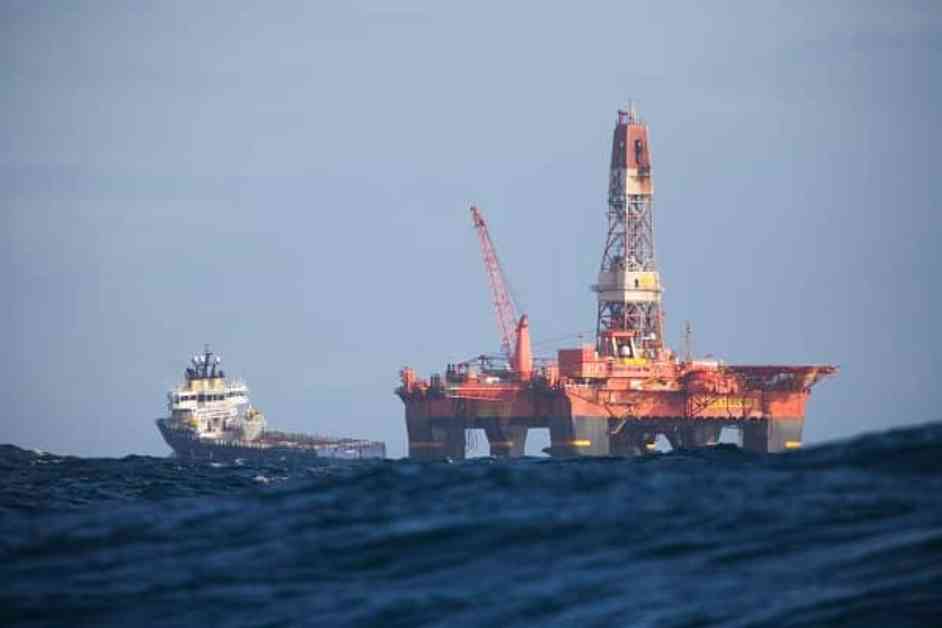Enhancing Safety in the Oilfield Sector Through Technology
Protecting oilfield workers from harm is a top priority for most businesses operating in the oil and gas sector. Despite this focus on safety, tasks on remote well sites and offshore drilling platforms still present significant risks to workers. In order to mitigate these risks and improve safety standards, companies are increasingly turning to the latest technologies. Let’s delve into how these firms are leveraging technological advancements to enhance safety in the oilfield sector.
Robotics and Automation
One of the key ways in which oilfield companies are enhancing safety is through the use of robotics and automation. By utilizing robotics, companies are able to remove humans from the equation for the most hazardous jobs, thereby reducing the risk of workplace injuries. For example, automated drilling rig systems have been implemented to handle drilling pipe connections instead of relying on manual lifting by rig workers. This automation not only reduces the risk of back injuries but also minimizes the occurrence of serious oilfield accidents.
In addition, robotic arms are now being used to load lengths of drill pipe onto rigs, lowering the risks of incidents of serious oilfield injuries. By automating these tasks, companies are able to reduce the likelihood of dropped object accidents that often occur during manual handling of heavy equipment. Autonomous support vehicles, such as self-driving trucks and robotic rovers, are also replacing manually driven vehicles to transport drilling supplies, pipes, and tools. This shift eliminates collision hazards for workers and ensures the safe transportation of essential equipment around the worksite.
Automated Inspections
Another innovative use of technology in the oilfield sector is automated inspections. Operator-controlled drones equipped with cameras and sensors are now being deployed to inspect hard-to-reach areas without putting human inspectors at risk. These drones can efficiently scan storage tanks, check seams, and take measurements, all while avoiding the need for confined space entry. Furthermore, unmanned aerial vehicles (UAVs) are being used to scan miles of pipeline right-of-way to detect tiny leaks that are often difficult to spot on the ground. By leveraging automation for inspections, companies are able to identify potential issues quickly and proactively address them to prevent accidents and environmental damage.
The advantages of automation for health and safety are numerous. By removing workers from hazardous situations that historically led to incidents, companies can prevent injuries like falls and avoid liability lawsuits. Additionally, faster identification of issues from drones and data allows for quicker responses to mitigate environmental impacts. Continuous oversight by machines provides rapid incident alerting to minimize spills and other accidents, ultimately creating a safer work environment for oilfield workers.
Real-Time Remote Monitoring
With vast oilfields spanning hundreds of miles in remote regions, it is impossible for workers to physically monitor every well site or piece of production equipment. However, the advent of real-time remote monitoring technology has revolutionized how companies can keep track of their assets from a central location. Sensors installed on equipment can automatically detect anomalies and trigger alerts, preventing incidents before they escalate and harm the environment. This real-time monitoring system is crucial for ensuring the safety of workers and the integrity of oilfield operations.
The Internet of Things (IoT) plays a significant role in real-time alerting in the oilfield sector. Smart sensors retrofitted to existing equipment, such as pumps, separators, valves, and pipelines, continuously stream data to cloud platforms for analysis. Any deviation from specified parameters triggers alerts that notify control room operators of potential issues. By identifying growing problems like pressure buildup early on, companies can prevent catastrophic failures and maintain operational efficiency.
Drones are also being used for automated inspections in real-time monitoring. Operators can dispatch drones to facilities requiring inspection, where they autonomously scan equipment such as storage tanks or difficult-to-access areas with onboard cameras and sensors. The collected imagery is then fed into a digital twin system that compares the current state against the design, automatically flagging any corrosion, cracks, leaks, or anomalies. This proactive approach to monitoring helps companies address issues before they escalate, ensuring the safety and efficiency of oilfield operations.
Dashboards with actionable insights are another crucial component of real-time monitoring systems. These dashboards aggregate real-time data feeds from all connected equipment across the oilfield operational environment, providing a comprehensive view of production metrics and highlighting any issues needing attention. By leveraging data visualization, companies can optimize output, identify areas for improvement, and ensure the smooth operation of oilfield assets.
The ability to monitor hundreds of wells or miles of pipeline from a centralized location has transformed oilfield operations, making them drastically safer, more efficient, and environmentally friendly. By leveraging real-time monitoring technologies, companies can save lives, reduce risks, and enhance the overall sustainability of their operations.
Big Data Analytics
In addition to real-time monitoring, oilfield companies are increasingly turning to big data analytics to optimize their operations and improve safety standards. By analyzing vast amounts of data from sensors, satellites, and seismic scans, companies can gain valuable insights into their operations and make informed decisions to enhance efficiency and sustainability.
Machine learning plays a crucial role in unlocking reservoir insights and optimizing planning. Advanced algorithms interpret millions of data points beyond human capability, mapping subsurface geology to reveal sweet spots for precise well placements. By leveraging simulation models and digital twin technology, companies can simulate drilling plans and production scenarios, predicting future performance and testing various what-if situations to determine the optimal path forward.
Prescriptive analytics guide operations by monitoring infrastructure and real-time data feeds from well sites. By identifying optimization opportunities based on current operating conditions, companies can direct field technicians and engineers with precise actions to improve output and prevent potential issues. The environmental and financial benefits of sophisticated data analytics are significant, as carefully managed wells and production rates prevent strains that can lead to failures, reduce waste and energy usage, and increase output while minimizing environmental impact.
The Future Oilfield Powered by AI
Looking ahead, the oil and gas sector is poised to undergo a significant transformation as emerging technologies like the Internet of Things (IoT), machine learning, automation, and augmented reality are applied to drilling and production operations. These technologies will revolutionize oilfield worksites, making them ultra-efficient, hyper-connected, and ecologically intelligent landscapes of the future.
The convergence of physical and digital infrastructure, with every asset equipped with sensors streaming data to the cloud, will enable companies to optimize their operations with the help of AI algorithms. Augmented interfaces like AR glasses will extend virtual insights directly to workers, providing them with real-time information and enhancing their decision-making capabilities. Autonomous operations, with robotically controlled drilling rigs and semisubs running complex operations without human oversight, will become the norm in the oilfield sector. Drones and crawler robots guided by AI decision-making algorithms will handle inspections and repairs, ensuring that no personnel is needed on location except for emergency response teams.
Incident-free efficiency will be a hallmark of future oilfield operations, with assets remotely adjustable in real-time to prevent abnormal conditions and ensure optimized production via AI. The elimination of waste and minimization of environmental harm will be key priorities for companies, as they strive to achieve maximum efficiency and sustainability in their operations.
The Business Benefits
The adoption of safety and environmental technologies in the oil and gas sector offers tangible business benefits for companies operating in the industry. Improved compliance with environmental regulations, increased efficiency through automation, reduced insurance costs, and legal risk reduction are just a few examples of how companies can benefit from investing in advanced safety systems. By enhancing their reputation through leading safety and sustainability performance, oil companies can build brand loyalty and secure their public license to operate.
Challenges to Adoption
Despite the promising potential of modern safety and sustainability technologies, there are barriers slowing wider adoption across the oil and gas supply chain. These barriers include the expense of sophisticated monitoring sensors and analytics software, compatibility issues with aging equipment, talent shortages in recruiting skilled technical specialists, and the complexity of monitoring data created by ubiquitous sensors and digital systems.
Overcoming Adoption Barriers
Various initiatives are now helping oilfield businesses overcome these adoption barriers. Cloud computing platforms enable affordable and scalable data processing, open data standards ensure interoperability between data systems, industry associations offer training programs to build digital skills within the workforce, and third-party technology partners provide turnkey solutions for data capture and analytics. Governments also provide incentives to encourage investment in cleantech systems, while industry forums allow collaborative knowledge sharing around digital oilfield innovations.
The Future is Bright
Looking ahead, human-machine collaboration will continue to expand, enabling smoother remote operations and freeing up the workforce for higher cognitive-level activities. Intelligent control systems will provide automation, autonomy, insight, and risk reduction at new scales. With appropriate digital investments and cultural change, responsible oil and gas companies can enhance their social license to operate and achieve sustainable and efficient operations for decades to come.
In Conclusion
As the oil and gas sector embraces technology to enhance safety and improve efficiency, the future of oilfield operations looks promising. By leveraging robotics, automation, real-time monitoring, big data analytics, and AI, companies can transform their worksites into safer, more sustainable environments. Despite challenges to adoption, initiatives are in place to help companies overcome barriers and reap the benefits of modern safety and sustainability technologies. With a focus on innovation and collaboration, the oil and gas industry is poised to achieve greater efficiency, profitability, and environmental stewardship in the years to come.





















